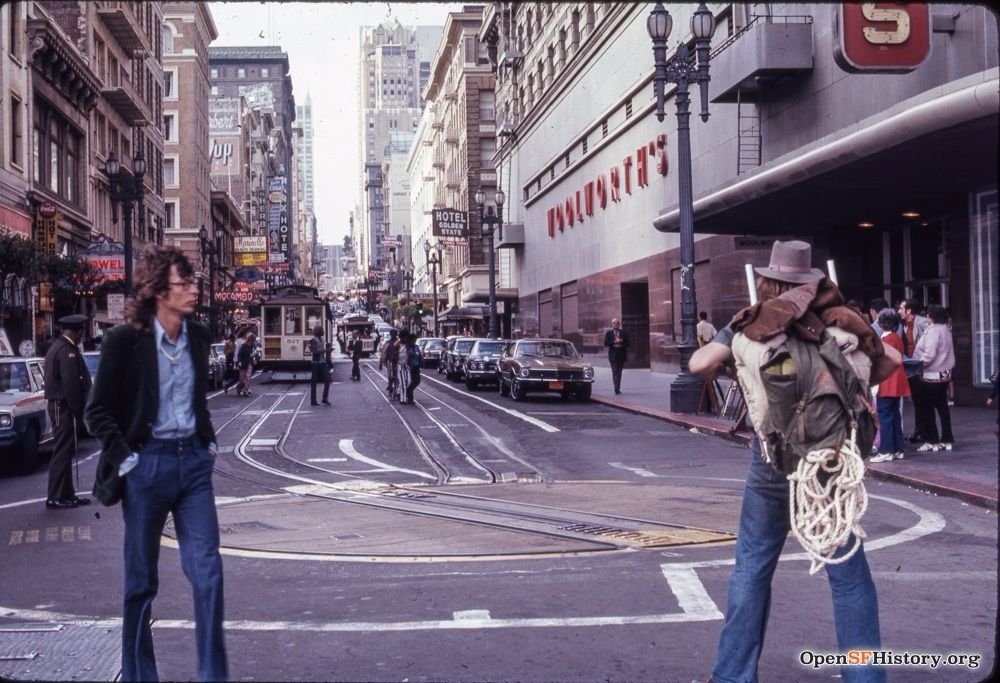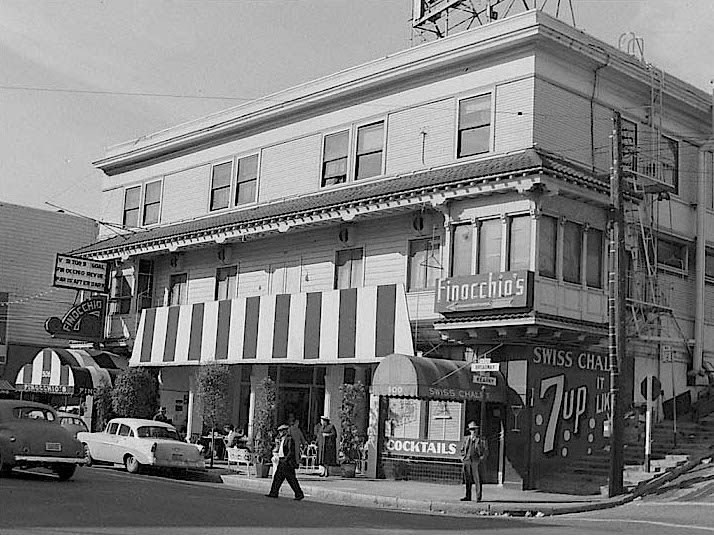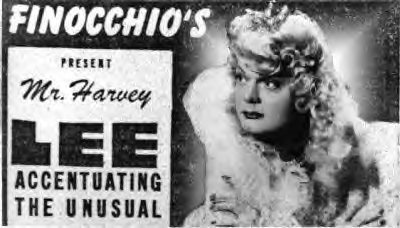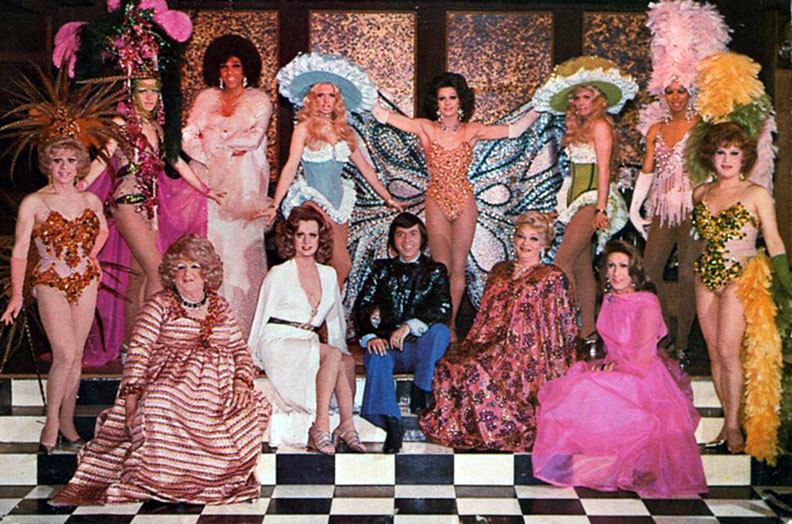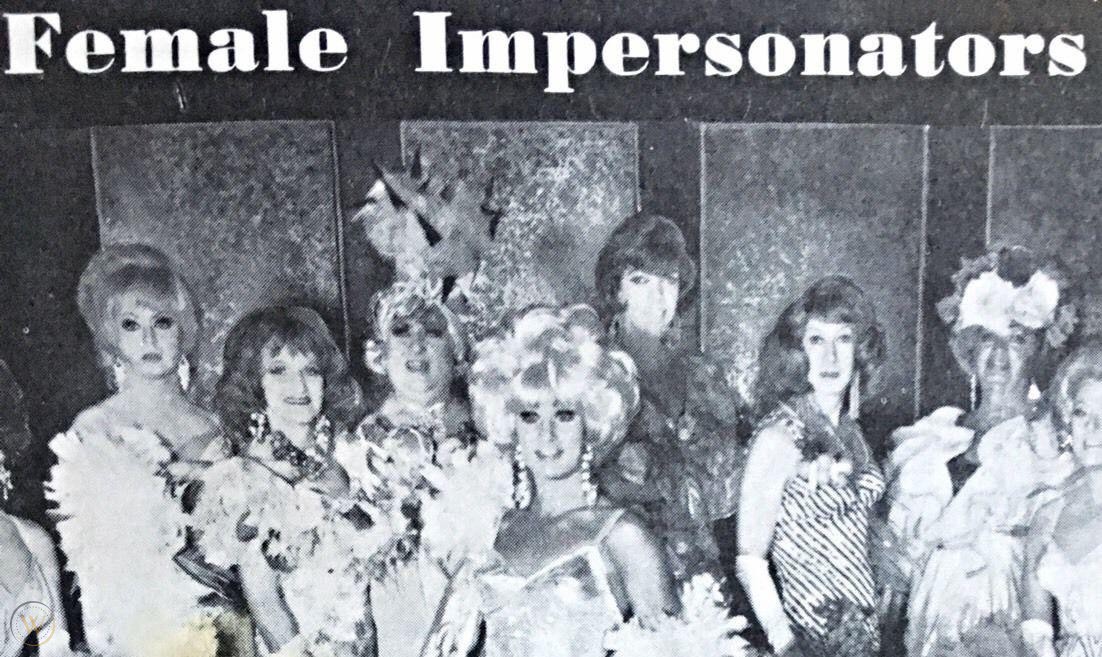Content Warning: This contains some descriptions of violence perpetrated against the LGBTQIA+ community, and it talks briefly about police brutality. Some quotes contain borderline slurs and derogatory language.
THE DOODLER
A series of unsolved murders from 1970s San Francisco
Background:
After the Gay Liberation Movement in the late sixties and early seventies, LGBT people from all over the world journeyed to San Francisco, which was perceived as a sanctuary where their historically criminalized sexual orientations could be treated with some legitimacy and respect, and where a flourishing and diverse nightlife provided social and sexual opportunities for LGBT people of all ages and demographics.
But the city was policed by a traditionally conservative police department who had a policy against hiring LGBT officers. Police participated in frequent raids of LGBT establishments, street harassment, beatings, and displays of public humiliation that were under-reported in the mainstream news. As a result, the LGBT community was wary of the San Francisco Police department, and crimes against LGBT people such as muggings, beatings, and sexual assaults, commonly went unreported. With this conflict between cultures came an increase in violent crime; 129 LGBT people were murdered in San Francisco in 1974, and 131 were murdered in 1975.
In 1973, two San Francisco police officers pulled a gay man over for a minor traffic violation. By the time the incident was concluded, they had beaten the man so badly, he suffered brain damage. The survivor of the attack received a six figure settlement, but no criminal charges were brought against the officers because the survivor did not file a formal complaint. It was common knowledge in the LGBT culture that antagonizing the police brought nothing but harm upon an LGBT person. The SFPD’s director of personnel gave an interview in which he stated that LGBT people were of a “bad moral character” and stated that the department would never hire a “covert homosexual.”
A member of the LGBT community from this time stated, “It was a time when gay men were looked down upon, even in a queer mecca like San Francisco. The police were more likely to raid our bars and entrap us in cruising spots than to take a violent threat to our community seriously.”
This was the setting in which a serial killer nicknamed The Doodler was able to murder between five and fourteen people, leaving behind three injured survivors of high social standing, without being convicted.
The Doodler:
Ocean Beach is peaceful in the middle of the night, as is the adjacent Golden Gate Park, which functions as New York’s Central Park does, creating a natural haven in the middle of a compact city. During the day, these thousands of acres of green space and coastline are alive with tourists and locals. At night, the silence can feel threatening. Sometimes, couples sneak off to use the solitude as an opportunity for a private moment, and sometimes, the privacy lends itself to violence.
Just before two o’clock in the morning on Sunday, January 27, 1974, the body of a man was discovered by the water on Ocean Beach at the eastern edge of the large Golden State Park. The man had been stabbed multiple times and his hands were similarly injured, demonstrating classic defensive wounds. The man was initially classified as a John Doe, as identifying documentation and items had been removed from his body. Slight rigor mortis hinted that the murder may have taken place two to six hours previously, late on Saturday night.
The man was ultimately identified as 49 year old Gerald Earl Cavanaugh. Gerald was born in 1923 in Canada and lived in San Francisco. Very little is known about Gerald, except that he worked in a mattress factory and was a Catholic. In a polite, restrained nod to his probable LGBT sexual orientation, the coroner indicated “never married” on the coroner’s report. That Gerald was found by water would later prove significant.
Violence against members of the LGBT community was not uncommon, and police had very little evidence to use as a basis for their investigation. Nonetheless, biological samples were taken at the crime scene and categorized, and the victim was buried according to his Catholic faith in the Holy Cross Catholic Cemetery in Colma. It is probable that the police knew Gerald had been attending a nightclub in the gay area known as the Castro on that Saturday night, for when subsequent crimes ensued, they were able to begin connecting this killer’s M.O.
Joseph Stevens, nicknamed “Jae,” was born in Texas in 1947 and moved to San Francisco in his late teens. San Francisco was home to thousands of young people in similar situations, young people moving to San Francisco in order to pursue a more authentic life wherein their LGBT identities could be public without as much fear of persecution.
The famous Tales of the City books, written by Armistead Maupin, chronicled the lives of many such young people and were exceedingly popular, first with residents of San Francisco, where they were published as serial shorts, and then with the nation when they were introduced in book form. Maupin, who was writing the Tales of the City stories during the time of the Doodler murders, chronicled it in the following passage: “the Doodler, a sinister black man who sat at the bar and sketched your face . . . before taking you home to murder you.” "
It is not known what pronouns Jae preferred, but research points to Jae participating in daily life as a man, while performing in drag as a female impersonator, or drag queen, in high-profile clubs in San Francisco at night. As such, I will use male pronouns when referring to Jae Stevens, but I hope readers will consider that this may be an inaccuracy, and if so, I offer my apologies and condolences.
Finocchio’s was a nightclub that opened its doors in 1933. The word “finocchio” means “fennel,” but it can also be considered a slur for a gay man. Originally, it was not only a gay nightclub; it featured straight performers as well and offered diverse shows to cater to an international crowd. Over the years, it became a venue that specialized in drag, or female impersonating, performers. Performers often wore ball gowns or other eye-catching costumes and lip synched to popular, top 40 songs. n a tongue-and-cheek article, the Sentinel called Finocchio’s “About as respectable as the Methodist church back home,” as it offered a more conservative, hands-off vibe than many similar establishments that catered to the LGBT community rather than visiting tourists. It was located in North Beach, a diverse neighborhood home to Italian, LGBT, punk, literary, and other eclectic establishments. One notable North Beach establishment is City Lights Bookstore, which published much of the early Beat poetry and literature.
Jae had recently been awarded the summer performance spot at Finocchio’s in the North Beach Neighborhood. I Jae’s Finocchio’s gig came at the tail end of eight years spent performing in the city as a successful female impersonator. In recent months, Jae had been concentrating on comedy as a new form of expression of his love of performance.
On the night of Monday, June 24, 1974, Jae was seen leaving The Cabaret Club, which was located in North Beach not far from Finocchio’s. It was not stated by police whether Jae was with a companion or alone, but future speculation by police that Jae was meeting someone leads to the conclusion that Jae was not noticed to be with a companion by these witnesses.
Early in the morning of June 25, 1974, Jae’s body was discovered by a woman walking her dog. He was in the bushes by Spreckels Lake in Golden Gate Park, not far from his own abandoned car. Jae had been stabbed three times, and there was blood in his nose and mouth. His identifying wallet and jewelry had been taken, leading to him being classified a “John Doe” by police until identification could be completed.
The Jae Stevens crime scene was only a mile from that on Ocean Beach, where Gerald Cavanaugh had been discovered in January. Because Jae’s car was near the scene of his murder, investigators considered that he likely drove himself to the location, either to meet someone or with someone in his car alongside him. It was also considered that the location, which was picturesque and extremely isolated at that late hour on a weeknight, was chosen as somewhere to enjoy a private sexual encounter. All signs pointed to Jae having gone to Spreckels Lake willingly, likely looking forward to an enjoyable encounter with a new romantic partner, and having been attacked either before, after, or during this encounter. It was reasonable to consider that he may have met his killer at the Cabaret Club, as it was common practice among clubgoers to meet potential romantic partners in clubs and retreat to more private locations afterward.
Klaus Christmann was a 31-year-old German national visiting friends, Mr. and Mrs Booker Williams, in San Francisco. By July 1974, he had been in the city for three months, while his wife and two children remained in Germany.
Early on the morning of Sunday, July 7, 1974, Klaus was discovered by a dog walker on Lincoln Way, a street leading from Golden Gate Park to Ocean Beach, two miles from Spreckels Lake and less than a mile from the Ocean Beach crime scene.
The attack on Klaus was particularly vicious. One investigator, who also worked on the Zodiac Killer case, described it as the most vicious stabbing he had ever seen. The coroner posited that the stabbing may have been an attempted decapitation. Klaus’ identification had also been taken, resulting in his being classified as a “John Doe” by police until he could be properly identified. The coroner noted that his pants were unzipped, supporting investigators’ theory that he had retreated to this quiet location to participate in a consensual sex act before being attacked. The coroner also noted that he had a tube of face paint in his pocket and wore orange bikini shorts under his pants, which led police to consider that he may have been working as a drag queen, or female impersonator, in secret.
After this third killing in such close proximity and with such similar surrounding circumstances, police felt certain these three murders were linked, and they began investigating this as a serial murder case. Their working theory was that the perpetrator was operating from a place of shame, participating in gay sexual acts and then acting out against his romantic partners either during or afterward.
In August of 1974, the Sentinel, an LGBT publication who paid the most attention to this story, ran a series of articles on the three stabbings, reporting that police had officially linked the murders. A quote from an August 9 article reads, “All apparently involved the victim meeting someone who suggested driving to a remote area as the Beach or Golden Gate Park. All three were viciously stabbed front and back. All three were stripped of identification and property.”
A police bulletin regarding these three murders read, "Victims one and two have homosexual propensities and due to underclothing and makeup in victim number three's [Claus Kristmann] pocket he also may have the same propensities."
At this point, all three victims were clearly linked, but other murders were happening at the same time. Police were following up leads all over the city, and articles were printed wondering if three active serial killers could be at large. An article entitled “Sado Murder Horror” carried an account both of the murders and a link to what we would now consider the BDSM scene. Police followed leads throughout the LGBT community, visiting nightclubs in the Castro, the Tenderloin district, and in other predominantly gay nightclub areas.
32-year-old Frederick Elmer Capin, from Washington State, was a decorated Vietnam veteran working in San Francisco as a registered nurse. He had been a medical corpsman in the Navy. Frederick had strong family ties to his grandparents and sister, who lived in Port Angeles, Washington.
On Monday, May 12, 1975, a hiker discovered Frederick’s body in the sand dunes a quarter mile south of Ocean Beach, where the first body in the series had been found. Drag marks indicated that Frederick had been dragged 20 feet, which was different. He had been dead approximately 10 hours, which made it likely he had died the night before, that of Sunday, May 11. Like the other victims, he had been stabbed repeatedly, and the coroner reported that stab wounds to the heart and aorta were his cause of death. Again, the location of the murder was in a natural, isolated setting near the beach and Golden Gate Park, and the time of the murder seemed to coincide with a natural time to retreat with a new romantic partner to a more private location ideal for a sexual encounter.
Frederick was the fourth official victim tied to these serial murders, but police were busy ruling out other homicides taking place throughout San Francisco at the same time.
Five months after Gullberg’s death the SFPD finally released a composite sketch of a suspect. “He was known, said the police, to frequent bars and restaurants in the Upper Market and Castro Areas. He was black, between 19 and 22 years old, between 5’10” and 6” tall, slim, and frequently wore a Navy-type watch cap” (Green 9). They believed that he could have possibly been an art student due to the frequent doodler MO of drawing the victim and luring them away. It is important to note that the sketches were never released to the press. It was also apparent that he had been visiting and was undergoing psychiatric care. It was even noted that the SFPD knew the therapist and had spoken with said doctor who admitted that a patient had admitted to the killings. The police had often looked for witnesses but feared that no one came forward due to not wanting to out themselves as homosexuals.
At one point, the Sentinel reported that the police had a man in custody. He had been collected from a nightclub, where he was seen offering to sketch patrons. When the police grabbed him, he dropped a butcher knife. The police reportedly spoke with the man’s psychiatrist, who said the man had confessed to the murders. Given that more eyewitnesses came forward, he should have been caught, right?
Three witnesses gave information to the police. One was actually stabbed six times by a young man resembling the composite sketch police had created of The Doodler. Another man was about to go to bed with a young man matching the description when a knife fell out of the man’s coat. One witness was a European diplomat; another, a well-known entertainer, and a third man who left the city and wouldn’t respond to police phone calls.
The problem with the witnesses: None would go on record. No one wanted to be outed.
Eventually, the police suspected The Doodler may have killed as many as 14 people. The case has been reopened, and they’re looking into five potential murders connected to this killer.
A police artist has updated the sketch: aging the Doodler, drawing him as he might look now. If he's still alive, the Doodler will be in his early 60s.




